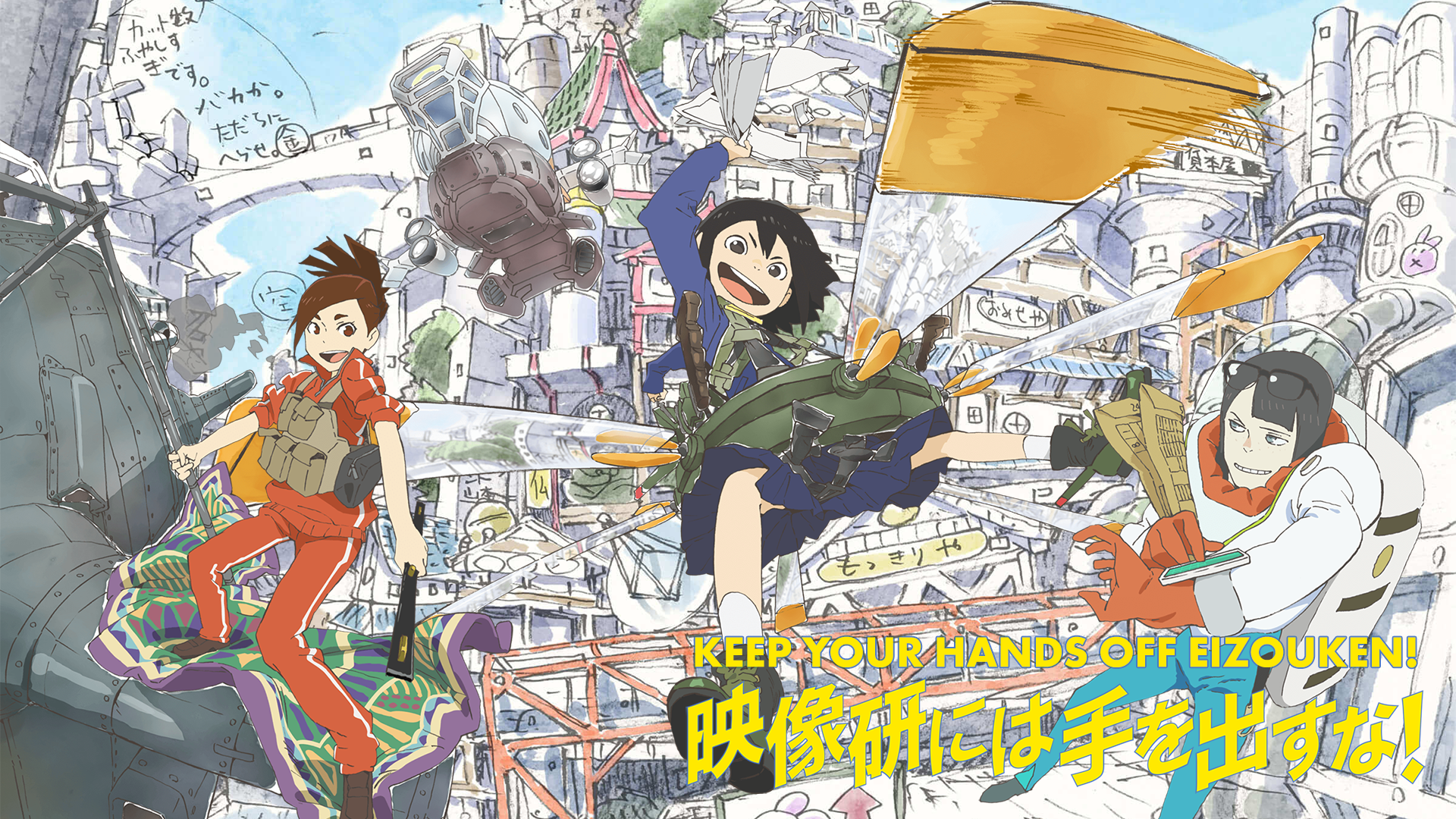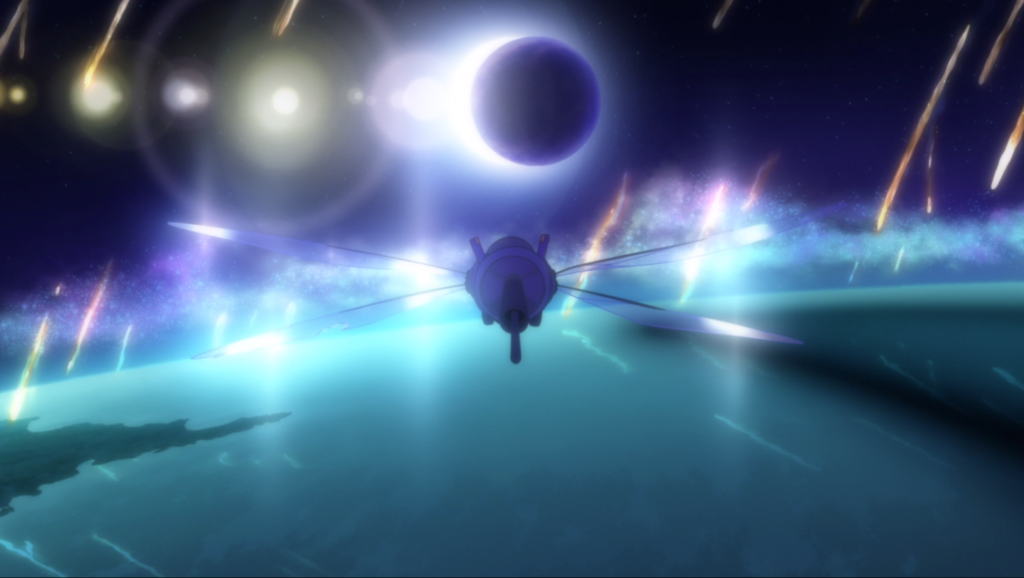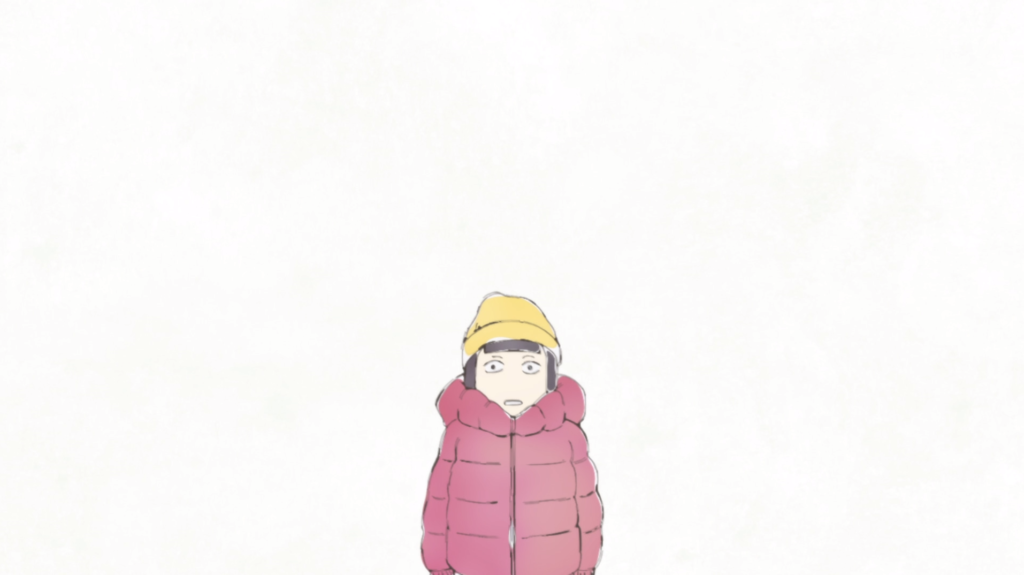
Masaaki Yuasa has earned a reputation as one of the most exciting creative voices in the anime industry, routinely helming projects that transcend the many cliches and ingrained assumptions that frequently define the medium. His latest project, Keep Your Hands off Eizouken, is yet another example of this trend, an overwhelming passionate and genuinely informative ode to the process of creating anime. Following the exploits of a high school anime club, it details the incredible levels of dedication, planning, and execution necessary to make animation actually come to life. We see the long hours, the innumerable artistic concessions, the tired expressions, the graphite smudged hands, the bitter discoveries that something has gone wrong in the pipeline.
But more than this, we see what drives these people to create. We see their flurries of inspiration come to life in dizzying fashion, our young heroines whisked away into ever-expanding daydreams as they imagine the future worlds they want to bring to fruition. Capturing an air of magical realism, these sequences transport us to the half-formed fantasies of our protagonists, visualizing the joys of creation in an inspiring and inventive fashion. It also offers an excuse for studio Science SARU to deliver a non-stop barrage of experimental vignettes that play with different art styles and novel premises. In an early sequence, the girls take flight in a mechanical dragonfly, zooming through a winding skyline depicted in a watercolor style. While many stories detail the process of creating art, I am hard-pressed to think of another that portrays this process so creatively. And while that all sounds very abstract, it is all delivered through a grounded coming-of-age story that is both charming and breezy.

The story follows three high school freshmen, Asakusa, Mizusaki, and Kanamori. After the first day of class, Asakusa drags her friend Kanamori to an anime screening. Asakusa points out various animation specifics with a kind of hobbyists’ glee, describing how the animators convey a sense of momentum, or how different shot selections serve different purposes. During the screening, they run into another girl Tsubame Mizusaki, an amateur model whose parents are famous actors. Despite her current vocation and her parent’s wishes, Mizusaki wants to become an animator more than anything else. Between Asakusa’s similar passion, and Kanamori’s desire to make a few bucks, the three decide to create a club dedicated to making anime. From there we follow as our heroines take on a variety of projects, experiencing the ups and downs of collaboration as they attempt to make a name for themselves.
Beyond the mind-bending animation, one of Eizouken’s best qualities is how it successfully endears us to this trio. Asakusa’s love of worldbuilding gives way to long rambling descriptions of the many worlds she’s imagined, her encyclopedic knowledge of mechanical design and ability to find inspiration in almost anything diverting us down many delightful tangents. Mizusaki is deeply interested in the process of human movement, giving rise to her interest in depicting the many quirks of bodily motion. Mirroring Asakusa’s passion for worldbuilding, Mizusaki explains the profound power of animation that successfully captures the essence of actual movement. Kanamori works as a sort of straight-man, keeping the creatives in check while comedically blasting through the many barriers in the club’s way. She employs clever rhetoric, blackmail, and every other tool at her disposal to battle their many would-be saboteurs. While it is often easy to be dismissive of the role of producers, the show does an excellent job of capturing the actual importance of wrangling creatives and balancing workloads. The specific interests of each help flesh out and explain the process of creating anime, while also generally detailing the many facets of successful storytelling. We even get glimpses into each of their pasts, the motivations for each of their interests coming to light through empathetic flashbacks.

The general rapport between these three is a constant delight, tapping into the authentic feel of creative partnership and friendship in general. This is all captured in a sort of madcap tone that calls to mind peak-Gainax shows like FLCL, zany boundless creativity crashing into effective reflections on the nature of growing up. Scenes like when the animation club appeals to the Student Council for funding are so full of weirdly specific details, like how the student body in the background seems to be in a perpetual mosh pit as the Security Club, donning full riot gear, pushes back on the cartoonish mob. Goofy visual comedy is accented by character art that morphs to punctuate a joke. As characters in the show explain the importance of worldbuilding, the series subtly accomplishes a great deal of worldbuilding of its own, the labyrinthine school campus defined by identifiable landmarks and many other specific details. Despite the flights of fancy of our creatives and the general kookiness, the show establishes a firm sense of place through its background art.
All of this comes together in this whirling tribute to the painful, but fulfilling process of storytelling, each episode chronicling the particulars of the trio’s many creative projects. Deep dives into these character’s imaginations deliver a consistent bounty of fanciful animation highlights, while the realistic portrayal of its cast often makes the scenes set in reality equally as entertaining. We see the club’s projects come together in elaborate feasts of animation that wholeheartedly affirm the incredible potential of the form. Keep Your Hands Off Eizouken is as informative as it is powerful, and one of the few shows that I can easily recommend to even those who normally dislike anime.






